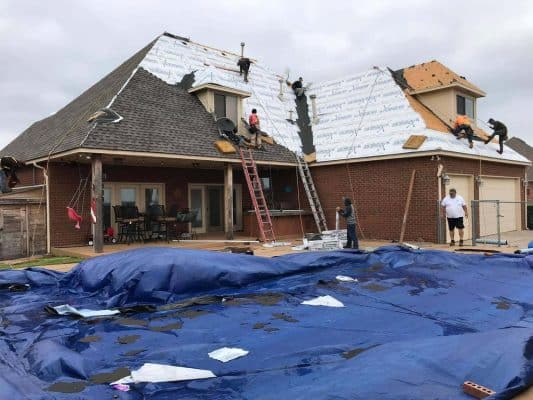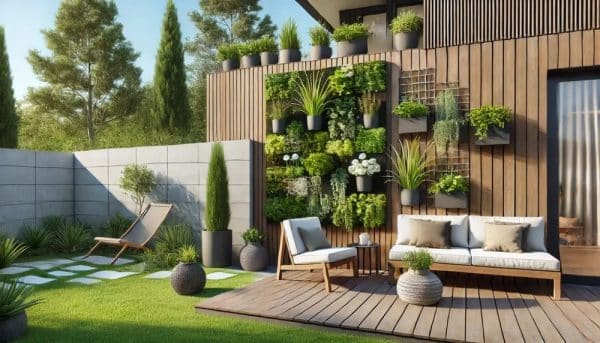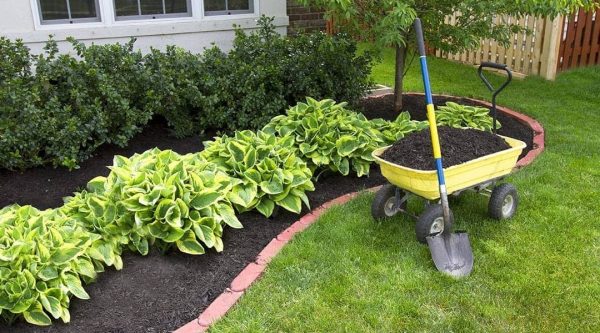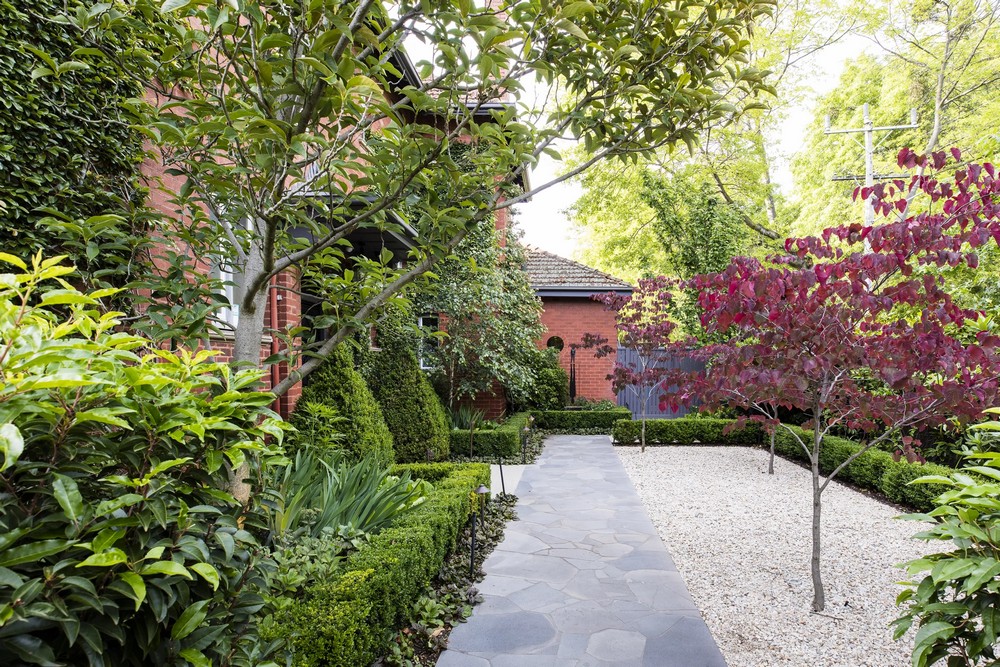
Research has unveiled the profound influence of plants on human minds and souls. They symbolize life and foster a connection with nature, offering relief from stress and contributing to a cleaner environment. For nature enthusiasts in search of exquisite, flowering trees to adorn their surroundings, this comprehensive guide is tailored to assist you in selecting the ideal trees. Cultivating a stunning garden around your home is made easy with a diverse array of trees, particularly those with noninvasive roots, which are both petite and suitable for planting in close proximity to your residence. Not only are they low-maintenance, but they also contribute to a healthy environment, create a natural ambiance, and impart a rejuvenating effect on your mental and spiritual well-being. Continue reading to discover the optimal trees for planting near your house and understand how they can positively enhance your lifestyle.
The Benefits of Planting Trees Near Your House
There are numerous benefits associated with the planting of trees near your house. Following are some economic, social, environmental, and communal benefits.
Environmental Benefits
The following are some benefits of planting trees near your house that will impact the environment.
- They help reduce heat, which is done through evaporation. The plants provide a cooling effect.
- They also reduce sunlight through their shady nature, saving the need for parking areas.
- They provide oxygen that is essential for breathing.
- These trees help in reducing
- The stormwater runoff reduces the pollution and the effects of flooding.
- These also help in providing protection and a home for many habitats.
Economic Benefits
- If the evergreen trees are placed on the side of your house, they help in wind breaking.
- This helps in reducing the cooling effects of the winds in the winter season.
- These trees are also helpful in summer for providing shade. It reduces the cooling cost. This is very helpful in the summer, but if we consider the winter season, the deciduous trees can be used, which helps pass the sunlight through them. As a result, it helps make your home warm in winter.
Communal Benefits
- If you desire to benefit your entire community, you must thoroughly plan for planting your trees to benefit the entire neighbourhood.
- The streets comprising of trees in a straight line have a break after on the traffic. Through this, the traffic can move safely, slowly, and in a calm environment.
- The trees planted near your house also have benefits for your neighbours. They can quickly get shade, food, and protection through them.
- They can be a significant, valuable asset for the entire community if carefully planted after thorough planning.
- They can also help complement the building design and the architecture of the neighbourhoods.
Considerations When Selecting Trees to Plant Close to Your House
There are numerous considerations to follow when selecting different types of plants to plant near your house.
Amount of Shade Exposure
The first thing to consider while planting the trees is the amount of shade the space receives through sunlight. The majority of plants are those that grow in the significant sunlight regions. While some plants also prefer places. So, the landscape where you have to grow the plants must be able to receive an ample amount of sunlight for shade.
Ground Moisture
Another factor contributing to the selection of plants to place near your house is the moisture in the ground. You must have complete knowledge regarding the field where you are growing the plant and how much time it stays wet.
Irrigation and Water Requirements
You must consider the water requirements for your field where you are growing the trees. For this, you must establish numerous irrigation practices. It ensures that the trees receive adequate water without any chance of overwatering. Over-watering can lead to root issues that should be avoided while planting trees.
Safety of the Plants
Choose a plant that can survive through different climates, diseases, rotting and risks from animals and humans. Plants with small roots are more subjected to harm. On the other hand, plants with giant roots can damage the home’s foundation, causing a lot of expenses. So, a tree that has small but stable roots is ideal.
Cleanup Requirements
Each tree has characteristics such as leaving drops, leaving gummy residues on the bark and fruit residues. In addition, leaves and fruits build up on the roof and attract bugs, making living challenging. The weight of this tree disposal can also damage the roof. Trees with less cleanliness requirements are ideal.
Root Sizes and Structure
Always choose trees that have non-invasive and well-behaved roots. These should be considered significantly when growing plants near sidewalks and utility lines.
Growth Rate and Mature Size
Consider the root system, height and canopy spread to prevent future issues. Also, the mature size should suit the available space.
Deciduous or Evergreen
The nature of trees, deciduous or evergreen, is decided based on your preference and the climate. Deciduous trees are preferable because they provide summer shade and ample sunlight during winter.
Space available
Considering the available space, large trees should not be planted much close to the house because of the structural damage. Proper spacing ensures adequate air circulation, which leads to a reduction in fungal growth.
How Far Should A Tree Be Planted From My House?
The distance to plant a tree from your house depends mainly on the tree’s roots and maturing sizes. But it is a significant consideration that the large trees are planted away from your house compared to the smaller ones.
- Large trees, above 70 feet tall, are planted 30 feet away from the house.
- Medium trees of approximate length between 30-70 feet tall are planted 20 feet away from the house.
- Small trees up to 30 feet are planted 10-15 feet from the house.
Best Trees To Plant Near Houses
Numerous types of trees can be planted near your houses based on their flowers, leaves, landscaping conditions, maturing size, species type, etc, that can be planted near your houses.

1. Japanese Maple
Japanese maple is known for its deeply lobed leaves, which come in numerous vibrant colours. They have shades of purple, green, red or other patterns. The trees have elegant and delicate branches, while some of the varieties of this plant also have a cascading and weeping growth habitat. These Japanese maples grow well in the well-drained soil and mostly prefer a partial shade. This is because they are adaptable to different types of garden landscapes.
I. Scientific name: Acer Palmatum
II. Mature size: 8 to 30 feet tall
III. Growth rate: 1-2 feet per year
IV. Deciduous or evergreen: Deciduous

2. American Holly
This evergreen plant is one of the best trees if you are seeking to have year-round privacy. It has glossy leaves with red berries that give it a beautiful appearance. This plant is native to the Eastern United States. The fruits these trees produce are red berries, a food for numerous birds. Considering the habitat, the American Holly can quickly grow in moist and dry woodlands with all its distinctive fruits and leaves. The American Holly is helpful in numerous cultural decorations and events as well.
I. Scientific name: Ilex Opaca
II. Mature size: 25 to 60 feet tall
III. Growth rate: 1-2 feet per year
IV. Deciduous or evergreen: Evergreen
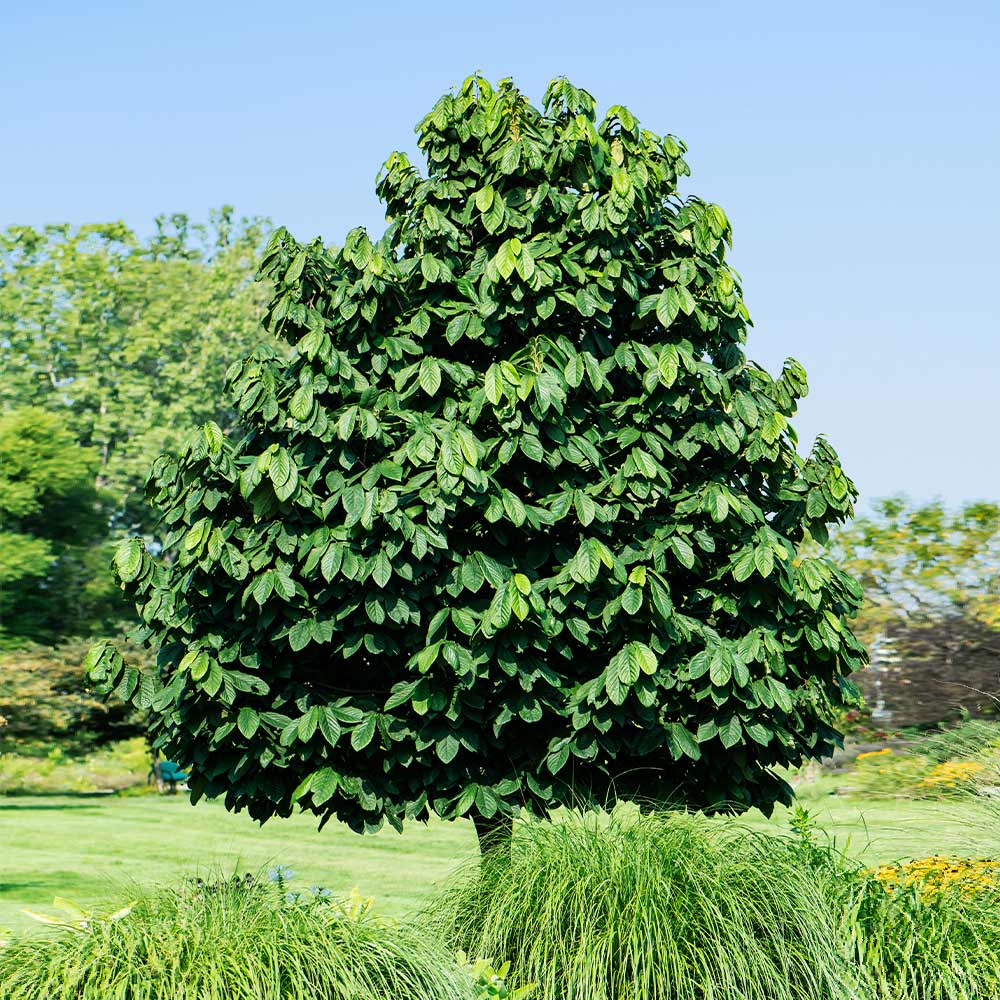
3. Pawpaw Plant
The Pawpaw plant is native to North America and is considered one of America’s most giant fruit-bearing trees. This tree produces large, oblong fruits. The flowers produced by these trees are unique and dark red. They are highly adapted to North America and in moist, rich woodlands. They are the best trees if you are seeking to give a tropical look near your house. This is because this fruiting tree is adaptable and the best choice for your garden.
I. Scientific name: Asimina Triloba
II. Mature size: 15 feet tall and wide
III. Growth rate: 1-2 feet per year
IV. Deciduous or evergreen: Deciduous
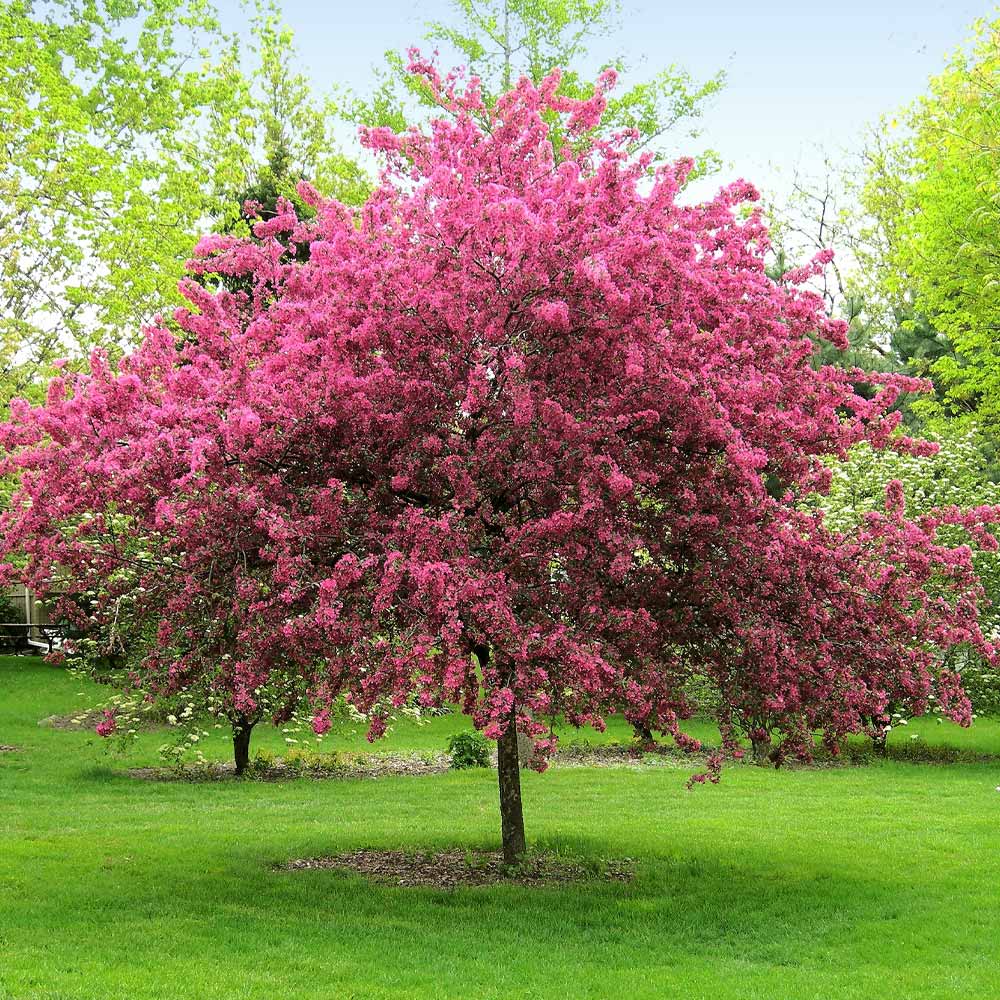
4. Crabapple
This deciduous plant has low deciduous leaves that vary in colour and shape. The leaves are typically green to red. Additionally, they have blossoms in the spring, which come in numerous colours, including red, pink, or white. The fruit crabapples have a yellow or red colour depending on the variety and the type of growing conditions. They are also used in making jellies or gems. These trees are best for growing near your house and will provide you with food, protection, and shade. This crabapple tree also has an ornamental value, making it more unique.
I. Genus: Malus
II. Mature size: 15 to 20 feet tall
III. Growth rate: 1-2 feet per year
IV. Deciduous or evergreen: Deciduous

5. Eastern Redbud Plant
It is a deciduous plant with small pink blooms. Its leaves are alternate and typically heart-shaped with a very smooth margin. The leaves are about 3 to 5 inches in width. The Eastern Redbuds are mostly known for their striking flowers, which grow primarily in spring. These flowers are usually pink to purple. This produces legume-like seed parts that mature in the late summer season. Thus, Eastern Redbuds are adaptable to different soil types and can easily tolerate partial shade.
I. Scientific name: Cercis canadensis
II. Mature size: 15 feet tall and 15-25 feet wide
III. Growth rate: 1-2 feet per year
IV. Deciduous or evergreen: Deciduous
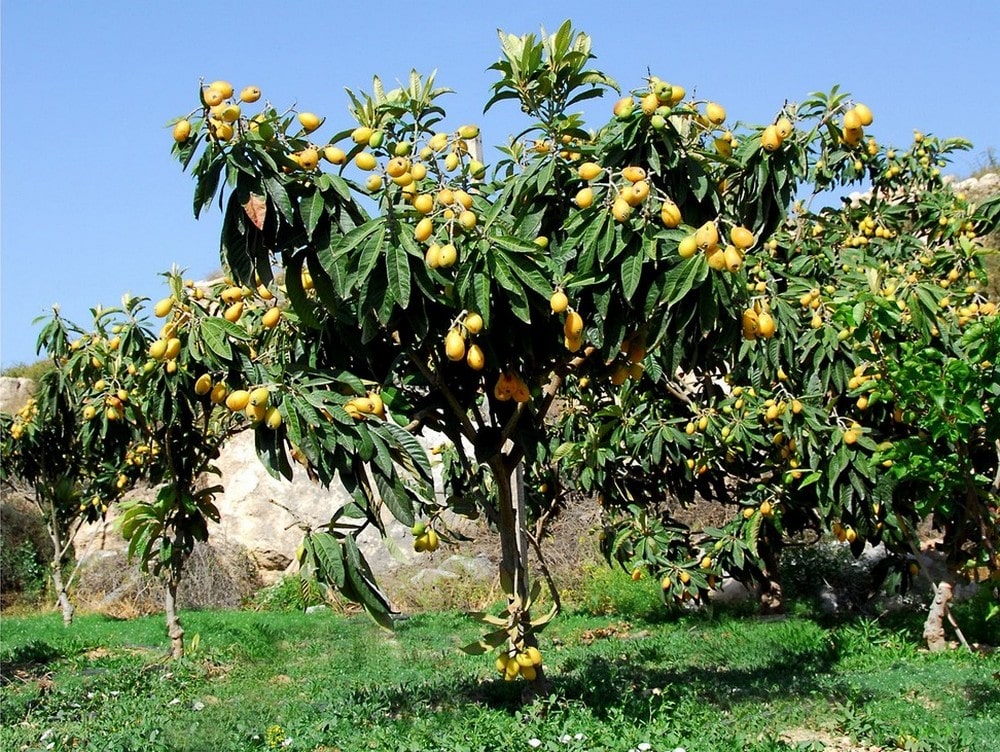
6. Loquat
Loquat is a unique tree that comprises colourful flowers and small white flowers. It is an evergreen shrub with unique characteristics and has leaves that are dark green and large. The flowers of this tree produce a good fragrance and are clustered. Meanwhile, the sphere-shaped fruit known as loquat or Japanese plum is produced. Its seeds are brown and large. The evergreen nature of this tree provides greenery throughout the year. Hence, this tree is best to plant near your house because of its attractive foliage, edible fruit, and fragrant flowers. Along with this, it also has medicinal uses, including some potential health benefits. They are among the most popular choices for the landscapes and gardens near your house, especially in places with a suitable climate.
I. Scientific name: Eriobotrya Japonica
II. Mature size: 15-25 tall and wide
III. Growth rate: 1.5 feet per year
IV. Deciduous or evergreen: Evergreen

7. American Hornbeam
The American hornbeam is an excellent choice if you search for unique trees to plant near your house. This tree helps produce seeds that have a very pleasing and unique shape. These trees are also known as blue beech or deciduous muscle wood. Its leaves are simple and alternate, turning yellow or red in the fall. The bark of these is bluish-grey, and they produce inconspicuous flowers. The fruit produced by the trees is small and is enclosed in leaves. So, the American Hornbeam tree has a life span of numerous decades. It is generally used in landscaping because of its compact size and attractive bark texture.
I. Scientific name: Carpinus Caroliniana
II. Mature size: 20-40 feet tall and 20-30 feet wide
III. Growth rate: 1 foot per year
IV. Deciduous or evergreen: Deciduous
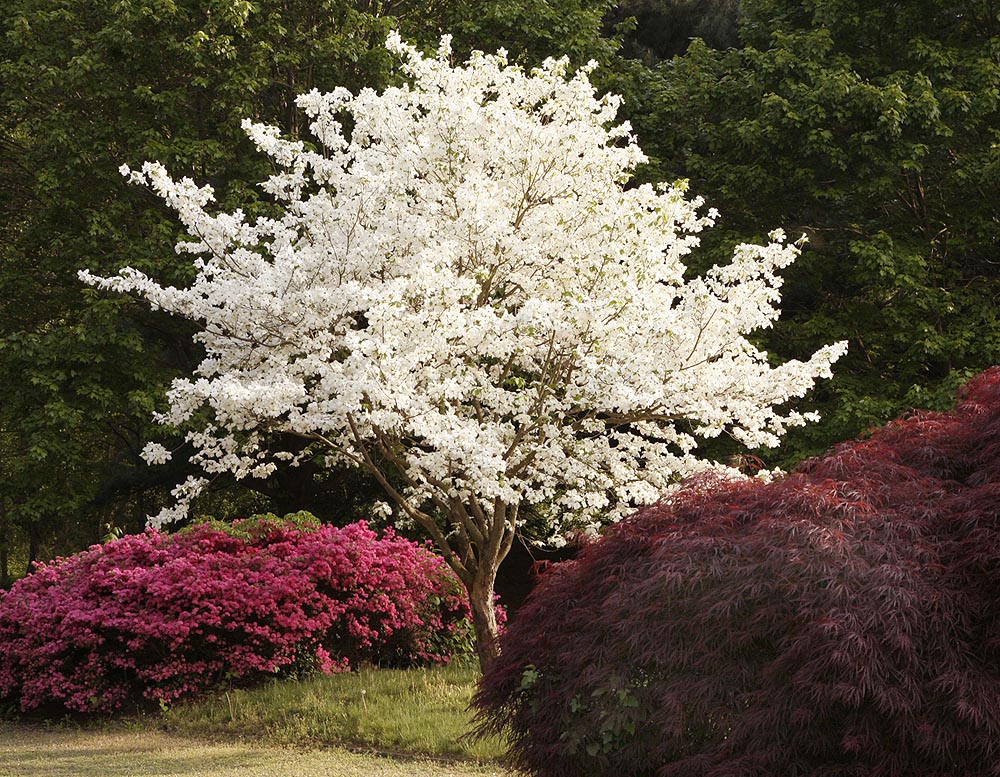
8. Flowering Dogwoods
Flowering dogwood is a deciduous plant known for its ornamental features. It also has distinctive flowers with detailed characteristics. Its leaves are simple and ovate. The flowers present in this tree comprise large petals. The bark is grey and smooth. The flowering dogwoods are native to Eastern North America and adaptable to numeral soil types. They do well in the partial shade and tolerate the full sunlight. If you properly care for these trees, the flowering dogwoods can live for several decades. Hence, flowering dogwood trees can easily be planted as ornamental trees in numerous residential areas, parks, and gardens.
I. Scientific name: Cornus Florida
II. Mature size: 10-25 feet tall
III. Growth rate: 1 foot per year
IV. Deciduous or evergreen: Deciduous
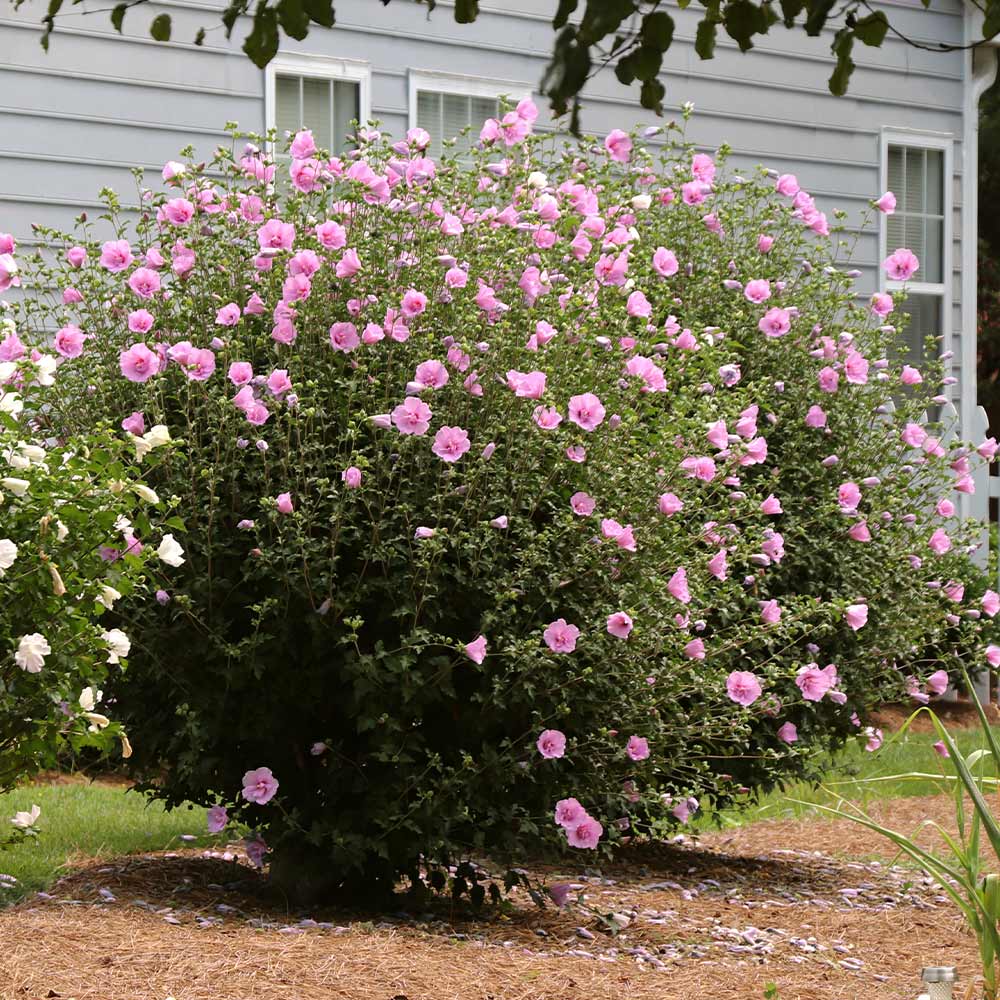
9. Rose of Sharon
Rose of Sharon is a flowering plant known for its Hibiscus-like flowers. The most distinctive feature of this tree is its large and trumpet-shaped flowers, which come in numerous colours, including purple, blue, white, and pink. The leaves of this tree are dark green with a smooth and brown textured bark. Rose of Sharon produces capsule-like fruits after flowering. Hence, they are commonly used as decorative shrubs in the borders or gardens near your houses. They are also one of the best trees to plant near your home. They can be considered a valuable addition to your garden in the flowering season. So, this tree is known for its long-lasting and vibrant flowers, making it more popular for landscaping.
I. Scientific name: Hibiscus Syriacus
II. Mature size: 8 to 12 feet tall, 6-10 wide
III. Growth rate: 1-2 feet per year
IV. Deciduous or evergreen: Deciduous
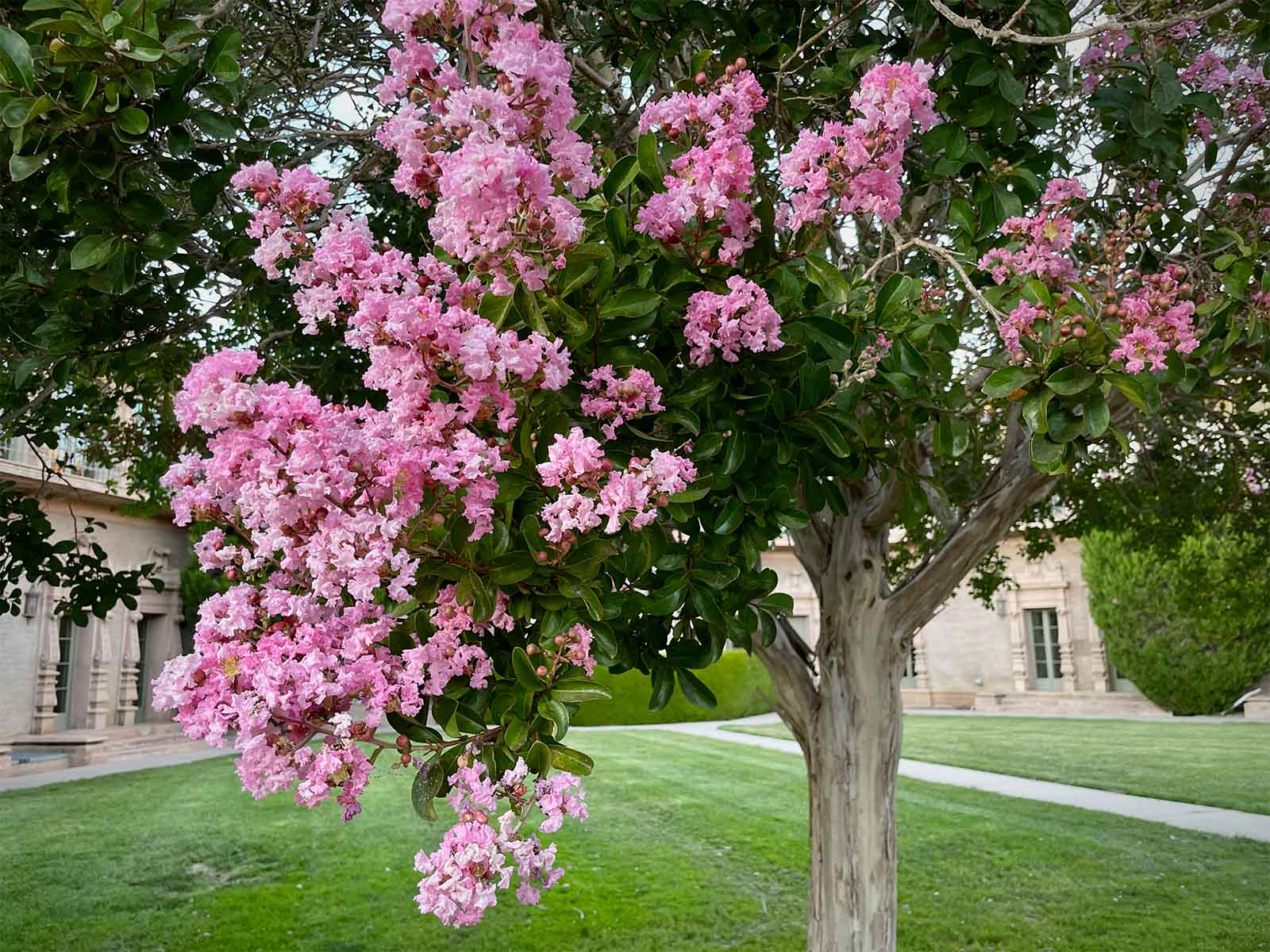
10. Crepe Myrtle
Crepe Myrtle is also one of the best trees to grow near your house. It is very beneficial and comprises small pink flowers and green foliage. It is a deciduous flowering tree that is small in size and consists of crepe-light flowers with unique characteristics. The most distinctive feature of this tree is the clustered flowers. Its leaves are simple and elliptical. This tree is native to Asia and highly suited for warm climates. After the flowering stage, the small capsules of the tree grow into tiny seeds. Hence, this crepe Myrtle tree is widely used in parks, gardens, and nearby streets to increase environmental impact.
I. Scientific name: Lagerstroemia Spp.
II. Mature size: 25 to 60 feet tall
III. Growth rate: 1-2 feet per year
IV. Deciduous or evergreen: Deciduous
What Trees Should You Avoid Planting Close To A House?
Avoiding the plant species that can cause potential risks while planting a tree near your house is advised. Following are some tree types that should be avoided to planting near your house.
- Trees with large and aggressive roots like Poplars and Willows.
- Trees are susceptible to pests.
- Trees that have weak branch structures like Silver Maple.
- The trees drop many leaves, fruits and seeds like Sweetgum trees.
- Trees having any invasive characteristics.
Conclusion
Here, you are provided with the best landscaping trees. These trees are a great gift of nature, making your house’s nearby areas more aesthetic and appealing. They also have many environmental, health, and social benefits. Moreover, these trees are an extraordinary standpoint with their stylish and shady feature. It is essential to consider the root system, size, and the potential for damage to the plant while selecting them to plant near your house. If you choose small ornamental trees, they can enhance the look of your landscape. Additionally, more deciduous trees provide seasonal shade during summer and allow light during the winter season. So always search for trees according to their soil condition, climate, and personal preferences to ensure your property’s sustainable and harmonious look.





